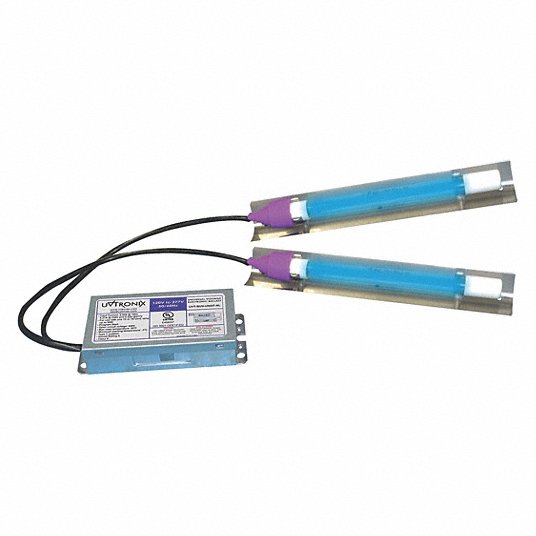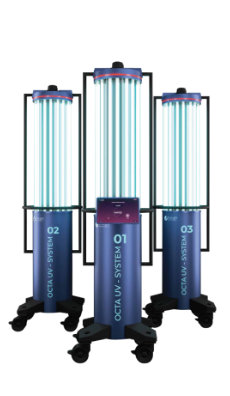UV Surface Disinfection Made Simple: Applying Ideal Practices for Optimum Outcomes
Harnessing the Possible of UV Sanitation: Shielding Health And Wellness and Hygiene
UV disinfection, a modern technology extensively used in different markets, has actually proven effective in getting rid of harmful microorganisms. From comprehending the devices at play to implementing this innovation in our day-to-day lives, this discussion intends to shed light on the capacity of UV sanitation and its duty in protecting our wellness and hygiene.
Recognizing UV Disinfection
UV sanitation is a highly efficient and commonly made use of method for making sure and removing hazardous virus health and hygiene. This strategy utilizes ultraviolet (UV) light to suspend microbes by damaging their DNA and avoiding them from reproducing. UV disinfection is especially efficient versus microorganisms, infections, and various other bacteria that can cause infections and conditions.
The concept behind UV sanitation is basic yet powerful. When UV light is produced at a details wavelength, it passes through the microbe's cell wall and disrupts its hereditary product. This procedure, recognized as photodissociation, causes the formation of thymine dimers, which prevent the microorganism from reproducing and making it harmless. UV sanitation can be used in numerous setups, consisting of water treatment plants, healthcare centers, food processing sectors, and air filtration systems.
Among the benefits of UV disinfection is its capability to efficiently and effectively get rid of a vast array of virus without the need for chemicals or additives. Unlike other disinfection methods, such as chlorine or ozone, UV sanitation does not introduce hazardous spin-offs or chemical deposits into the environment. Additionally, UV disinfection is a non-contact procedure, which suggests that it does not need physical contact with the microbes, reducing the risk of cross-contamination.

The Science Behind UV Disinfection
The effectiveness of UV disinfection exists in its capacity to interfere with the genetic material of microorganisms, providing them not able to replicate and therefore eliminating their harmful capacity. This high-energy UV-C radiation is most reliable in sanitation applications because it can permeate the cell wall surfaces of microbes and damage their DNA or RNA.
When microorganisms are exposed to UV-C radiation, the energy is soaked up by their hereditary material, creating bonds to break and developing chemical reactions that disrupt their capacity to reproduce. This protects against the microbes from spreading and replicating infection. UV disinfection is specifically reliable versus germs, viruses, and fungi, consisting of usual virus such as Escherichia coli, Salmonella, and Flu.
The science behind UV disinfection is supported by comprehensive research and studies. It has been shown that exposure to a sufficient dose of UV-C radiation can achieve a high degree of sanitation, commonly going beyond 99.9% effectiveness in eliminating microbes. Nevertheless, it is essential to keep in mind that the efficiency of UV disinfection depends upon various variables, consisting of the intensity of UV-C radiation, direct exposure time, distance from the UV resource, and the vulnerability of the microorganism to UV radiation.
Applications of UV Sanitation
Provided the considerable research and efficiency of UV disinfection in interfering with the genetic material of microbes, it is very important to discover the various useful applications of this innovation. UV sanitation has proven to be a beneficial tool in a vast array of sectors where preserving a tidy and safe atmosphere is important.
One major application of UV sanitation remains in healthcare settings. UV light can be utilized to sanitize surface areas, tools, and even the air in health centers and medical facilities. This assists to lower the threat of healthcare-associated infections and guarantees a more secure environment for individuals and medical care workers.
One more important application is in the food and drink sector. UV disinfection is utilized to treat water and get rid of damaging virus, such as E. coli and Salmonella, from the production procedure. uv surface disinfection. This ensures the safety and security and high quality of the items we consume
UV disinfection is additionally widely used in water treatment plants and wastewater treatment facilities. It is an effective method for destroying dangerous germs, infections, and bloodsuckers that can be existing in water resources. This assists to supply tidy and safe alcohol consumption this article water to areas and secure the atmosphere from contamination.
Additionally, UV disinfection is used in the pharmaceutical sector to decontaminate tools and preserve the stability of products. It is also used in labs and research study facilities to prevent contamination and guarantee accurate results.
Advantages of UV Sanitation Modern Technology
One significant advantage of employing UV sanitation technology is its ability to efficiently eradicate microorganisms without using extreme chemicals. This is especially helpful in different settings, such as health care facilities, water treatment plants, and food handling industries, where the presence of hazardous pathogens positions a significant danger to public health and safety.
Unlike traditional sanitation methods that count on chemicals like chlorine or ozone, UV sanitation innovation utilizes ultraviolet light to target and destroy the DNA of microbes, properly counteracting their capacity to replicate and trigger infections. This process not only removes the demand for possibly harmful chemicals but additionally lowers the threat of chemical deposit or by-products remaining in the cured setting.

In addition, UV sanitation technology is ecologically pleasant. As it does not count on the usage of chemicals, it removes the demand for their transport, disposal, and production, decreasing the total carbon impact related to disinfection procedures. Additionally, UV disinfection systems have a longer life expectancy contrasted to chemical-based approaches, resulting in much less frequent substitute and more decreasing waste.
Carrying Out UV Sanitation in Daily Life
To efficiently apply UV sanitation in life, individuals and organizations can integrate portable UV disinfecting tools right into their health regimens and cleansing techniques. These tools are made to produce ultraviolet light, which has been shown to eliminate or suspend a large range of microorganisms, consisting of germs, fungi, and infections. By utilizing mobile UV sterilizing gadgets, individuals can disinfect typically touched surface areas and things, such as cell phones, keys, laptop computers, and doorknobs, reducing the danger of spreading out germs and infections.
In addition to including mobile UV sanitizing devices, it is vital my company to adhere to proper guidelines and referrals for efficient UV sanitation. This consists of guaranteeing that the device is made use of properly and for the recommended period to attain optimum disinfection outcomes. It is likewise important to prioritize precaution, such as wearing safety eyewear and staying clear of direct exposure of the UV light to the skin.

Furthermore, companies can apply UV sanitation modern technology in numerous setups to enhance hygiene techniques. Medical facilities and health care facilities can utilize UV sanitation robots to disinfect person spaces, operating cinemas, and other high-touch locations. Food processing sectors can integrate UV sanitation systems into their manufacturing lines to enhance go to the website food security and prevent contamination.
Final Thought
In conclusion, UV disinfection modern technology holds excellent potential in securing health and health. By harnessing the power of ultraviolet light, it successfully eliminates damaging microorganisms and minimizes the risk of infections. This innovation can be applied in different setups, such as medical facilities, water therapy facilities, and public areas, giving a risk-free and effective technique of disinfection. With its many benefits, UV disinfection is a beneficial device for maintaining a tidy and healthy and balanced setting.
Unlike other sanitation approaches, such as chlorine or ozone, UV sanitation does not introduce dangerous byproducts or chemical deposits into the environment. It is essential to note that the efficiency of UV sanitation depends on different variables, consisting of the strength of UV-C radiation, direct exposure time, range from the UV resource, and the susceptibility of the microbe to UV radiation.
Another advantage of UV disinfection technology is its ability to offer fast and continual disinfection. Unlike guidebook cleansing approaches, which can be taxing and need considerable labor, UV disinfection systems can be automated and operate continuously, guaranteeing consistent sanitation without human treatment.To properly carry out UV disinfection in daily life, organizations and individuals can include portable UV sanitizing tools right into their hygiene regimens and cleansing methods.